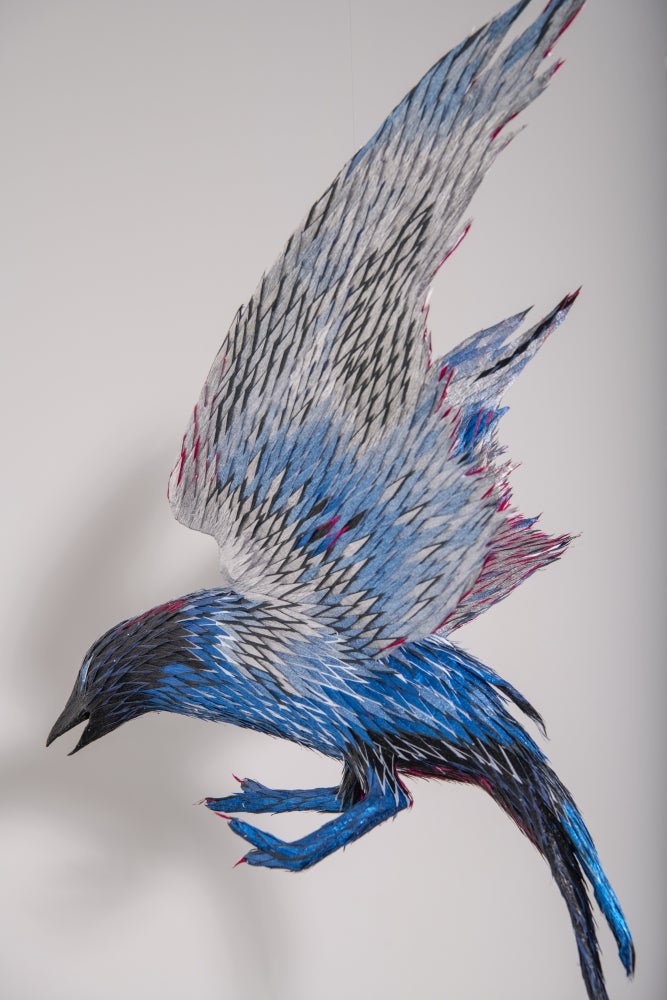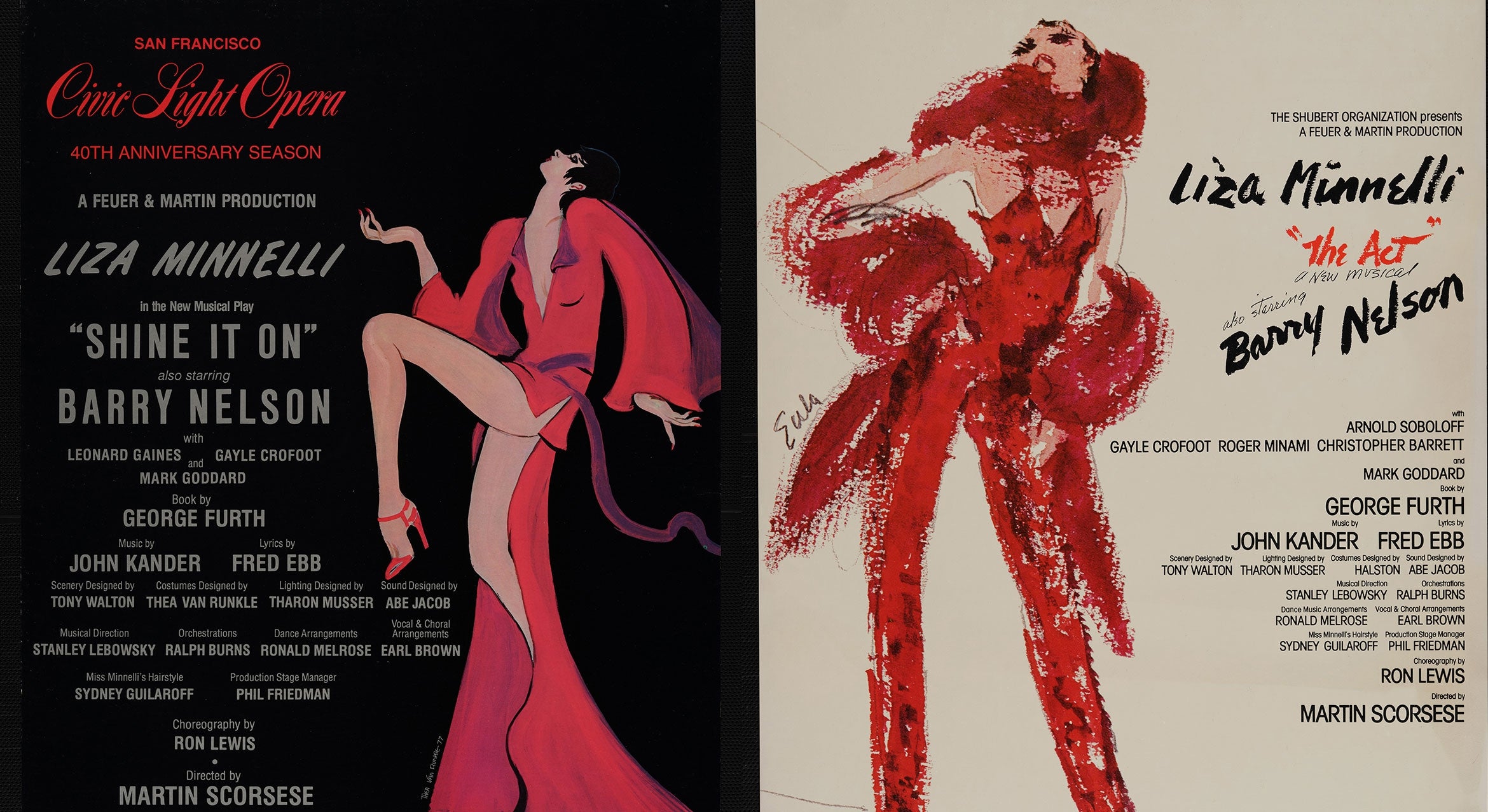Dissonance by Design
Taken together, the three exhibitions soon to open at UC Santa Barbara’s Art, Design & Architecture Museum — comprised of pencil drawings, artist’s books, piñatas, architecture and graphic design — may not, at first blush, convey cohesion.
But in fact, these seemingly disparate works do share some binding threads, according to Elyse Gonzales, acting director of the museum, noting that purposeful dissonance can create a more thought-provoking experience.
“It’s an incredible range of work that is on view, and I think all the arts are represented in these new shows,” Gonzales said. “Drawing is an underlying concept that all the artists embrace, but I think the most obvious theme is art and architectural history. All the artists on view in these exhibitions have been deeply influenced by historical antecedents and overtly refer to them in their finished works.”
The exhibitions, “Lee Mullican: Drawings,” “The Muse Project: Mary Heebner and Jeff Shelton” and “Roberto Benavidez: Piñatas of Earthly Delights,” open Saturday, July 13, and continue through Sunday, Sept. 1. An opening reception will be held Friday, July 26, from 5:30 to 7:30 p.m.
In the case of Benavidez, Gonzales noted, his reference is clear and distinct: the heaven-and-hell triptych “The Garden of Earthly Delights,” by Dutch master Hieronymus Bosch. Heebner, meanwhile, draws upon classical statuary as a reference point, while Shelton is inspired by historic Spanish building designs and guild practices. And finally, Mullican references Native American designs in his work, among other influences.
“It’s truly a rich blend of these artistic and architectural reference points,” Gonzales said of the overall aesthetic that the exhibitions create.
With a career spanning 50 years, Mullican (1919-1998) worked in a variety of media, including drawing, painting and sculpture. The exhibition presents 14 of his early drawings, all made using the surrealist technique automatism, which rejected any formal, aesthetic concerns and instead allowed compositions to unconsciously develop. Mullican’s practice was influenced by his time as a military cartographer during World War II. His study of surrealism, abstract expressionism, Zen Buddhism and Native American art helped to further shape his work into a unique brand of aesthetics that combined European art movements and American art in general. The resulting compositions display a flurry of expressive marks and suggestive imagery, alternating between chaotic and serene.
“The Muse Project” focuses on the interdisciplinary creative process that characterizes the work of artist Mary Heebner and architect Jeff Shelton, whose practices each revolve around cultures and traditions that developed in the Mediterranean basin centuries ago: Heebner dissects images of Roman and Greek figures in collages and watermarked books to “bring them back to life,” while Shelton interprets popular Spanish building traditions in architectures and designs that expose his “less is more” sensitivity.
To illustrate their working methodologies — and, Gonzales said, in keeping with the museum’s “drive to investigate the outcomes of art and architecture’s crosspollination” — the exhibition features a collaborative twist of sorts. Heebner’s studies are presented alongside works from the museum’s architecture collection, chosen by the artist herself. Likewise, Shelton’s projects are presented with his selections from the institution’s fine art holdings.
“It’s always special to look at works of art through the eyes of another creative practitioner,” Gonzales said. “It reveals so much about how artists and architects perceive their own work and how underlying, even hidden tenets can guide their practice. ‘The Muse Project’ is an invitation to engage with the materials presented, imagining ulterior connections among them. This exhibition highlights creativity’s relational nature.”
Sculptor Benavidez makes elaborate, finely crafted piñatas, many of which reference significant works. An ongoing series that he started in 2013 recreates the fantastical imagery found in Bosch’s “The Garden of Earthly Delights” (circa 1490-1500). In his first museum solo exhibition, Benavidez’s large-scale installation at AD&AM includes over 20 life-size piñatas that represent animals, fruits and figures found in that painting. Taking his cues from the iconic piece, Benavidez makes subtle alterations to render the works uniquely his own.
As playful and seductive as Benavidez’s work is, it also is imbued with a pointed agenda, Gonzales noted. By combining an iconic image of Western European art with the craft of the piñata, Benavidez alludes to his own mixed identity, which includes a mother of Anglo-European descent and a father of Mexican heritage. “I want my unique culture and cultural background to be celebrated and valued, especially in this moment of such outright hostility,” the artist himself has said of his work. In making his piñatas so refined, Benavidez claims respect for this ethnic community.
And yes, Benavidez’s piñatas are stuffed — with something. The artist keeps the contents a mystery, but one will be broken open by the public during the opening reception.
The Art, Design & Architecture Museum is open every Wednesday through Sunday noon–5 p.m., and Thursdays noon–8 p.m. Admission is free and open to the public.




